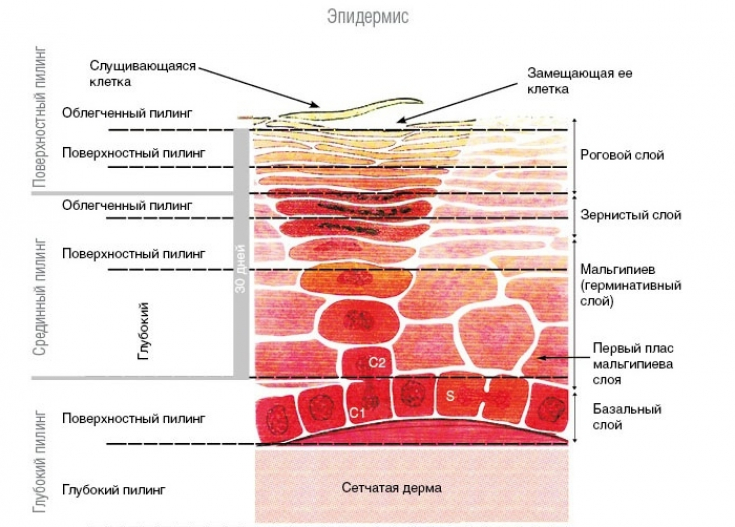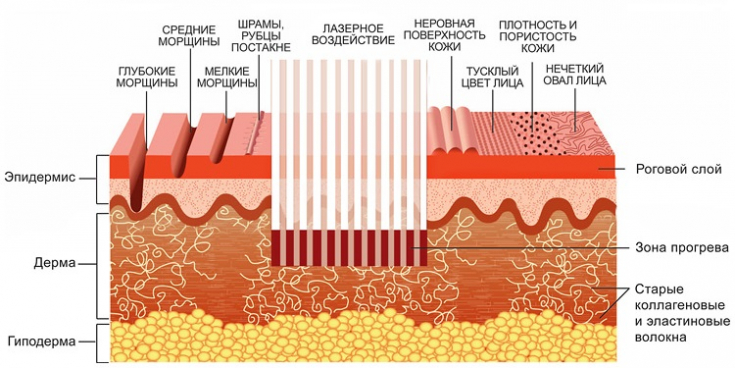Today, the problem of treating acne and post-acne is becoming more and more urgent. The adverse effects of acne can cause discomfort to the patient for many months or years.
Post-Acne – this is a complex of secondary persistent skin changes that have arisen as a result of a long course of acne or inadequate treatment of pathology. Fortunately, the modern beauty industry has a powerful arsenal of tools to combat post-acne, including scars.
With the help of injection, mechanical and hardware techniques, post-acne scars have ceased to be a complex and intractable problem.
Read on estet-portal.com about the characteristic signs of post-acne scars, as well as the correction of skin defects using peeling, cosmetic, and injection techniques.
Varieties of scar tissue: characteristic signs of post-acne scars
A scar occurs when ulcers, deep pustules, fissures, or excoriations heal. It is a coarse fibrous connective tissue – collagen fibers deprived of blood supply.
Relative to the surface of the skin, scars can be superficial and deep, atrophic, normotrophic or hypertrophic.

As a rule, post-acne scars are presented in the form of atrophies: scars are characterized by sinking and uneven skin, as well as discoloration.
Unlike normotrophic scars, which are on the same level with nearby tissues, an atrophic scar is located below the level of the skin, which is due to insufficient collagen synthesis.
Atrophic scars are also devoid of sweat, sebaceous glands and hair follicles.
Follow us on Facebook
Atrophic scars: mechanical treatments for skin defects
To eliminate post-acne scars, it is recommended to use mechanical resurfacing or microdermabrasion.
The essence of this method is to exfoliate the upper layers of the epidermis using a diamond or crystalline nozzle of the device.

Microdermabrasion course consists of 6-10 sessions lasting 30 minutes. After the procedure, it is recommended to refrain from strong physical exertion, visits to the solarium, baths, saunas, as well as the use of decorative cosmetics for several days.
Contraindications for microdermabrasion are:
• herpes;
• open wounds;
• acute inflammatory processes;
• pronounced rosacea;
• pregnancy and lactation;
• chronic dermatoses;
• disturbances of the endocrine and cardiovascular systems.
The frequency of the procedure should not exceed once every 7-10 days.
Smooth as silk: indications, contraindications and dermabrasion technique
Chemical peels in the fight against post-acne scars: effective acids
Chemical peels are the most popular among post-acne patients. Post-acne scars, as a rule, are corrected with the help of medium or deep peels. gentle Jessner peeling. It contains salicylic, lactic acids and resorcinol, which together have a mild but pronounced effect.
Trichloroacetic acid (35%) is also widely used, which has a pronounced bactericidal, anti-inflammatory, regenerative and stimulating effect.
TCA Medium Peel gives immediate visible results and does not require pre-peel preparation.
Retinol-based retinoic peel gives good results. The advantage of yellow peeling is relatively easy tolerability and a strong antioxidant effect of the active substance.Deep phenolic peeling (50%) is carried out using carbolic acid, which penetrates to the deep layers of the dermis. This type of peeling is quite aggressive, toxic and requires more time for rehabilitation. However, phenol peeling has the most pronounced remodulating and rejuvenating effect.
You may also be interested in:
Salicylic acid peeling: a comprehensive review
The active ingredients in the injections stimulate the processes of cell regeneration, trigger the synthesis of collagen and own glycosaminoglycans.
The course of mesotherapy for atrophic skin changes is 8-10 procedures. For deep skin defects, hyaluronic acid-based fillers and collagen-based gels are used.
Hardware cosmetology – powerful technique in the fight against atrophic scars
Laser resurfacing requires preliminary preparation and careful care during the rehabilitation period.
Acne scars are also effectively treated with other hardware methods:
• microcurrents; • iontophoresis;
• phonophoresis;
• brossage;
• electroporation;
• ozone therapy;
• cryotherapy.
The combination of injection and hardware techniques in one course gives an excellent effect. Treatment of post-acne scars – long-term therapy requiring a responsible approach and patience. Therefore, the cosmetologist needs to correctly determine the condition of the patient's skin and select the appropriate treatment for defects.
Thank you for staying with estet-portal.com. Read other interesting articles in the "Cosmetology" section. You may also be interested in:
Post-acne: when a doctor should be a psychologist







Add a comment